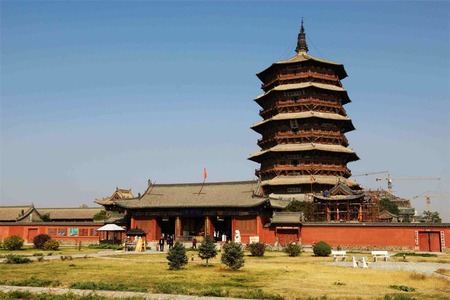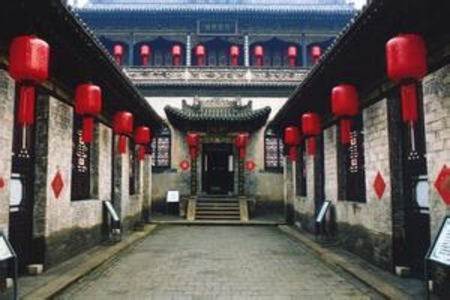Mt. Wutaishan Two days tour
Two days' classci tour in Wutaishan Mountain.
With its five flat peaks is one of the four sacred Buddhist mountains in China. It is seen as the global centre for Buddhist Manjusri worship. Its fifty-three monasteries, include the East Main Hall of Foguang Temple, with life size clay sculptures, the highest ranking timber building to survive from the Tang Dynasty, and the Ming Dynasty Shuxiang Temple with a huge complex of 500 ‘suspension’ statues, representing Buddhist stories woven into three dimensional pictures of mountains and water. The temples are inseparable from their mountain landscape. With its high peaks, snow covered for much of the year, thick forests of vertical pines, firs, poplar and willow trees and lush grassland, the beauty of the landscape has been celebrated by artists since at least the Tang Dynasty – including in the Dunhuang caves. Two millennia of temple building have delivered an assembly of temples that present a catalogue of the way Buddhist architecture developed and influenced palace building over a wide part of China and part of Asia. For a thousand years from the Northern Wei period (471-499) nine Emperors made 18 pilgrimages to pay tribute to the bodhisattvas, commemorated in stele and inscriptions. Started by the Emperors, the tradition of pilgrimage to the five peaks is still very much alive. With the extensive library of books collected by Emperors and scholars, the monasteries of Mount Wutai remain an important repository of Buddhist culture, and attract pilgrims from across a wide part of Asia.
With its five flat peaks is one of the four sacred Buddhist mountains in China. It is seen as the global centre for Buddhist Manjusri worship. Its fifty-three monasteries, include the East Main Hall of Foguang Temple, with life size clay sculptures, the highest ranking timber building to survive from the Tang Dynasty, and the Ming Dynasty Shuxiang Temple with a huge complex of 500 ‘suspension’ statues, representing Buddhist stories woven into three dimensional pictures of mountains and water. The temples are inseparable from their mountain landscape. With its high peaks, snow covered for much of the year, thick forests of vertical pines, firs, poplar and willow trees and lush grassland, the beauty of the landscape has been celebrated by artists since at least the Tang Dynasty – including in the Dunhuang caves. Two millennia of temple building have delivered an assembly of temples that present a catalogue of the way Buddhist architecture developed and influenced palace building over a wide part of China and part of Asia. For a thousand years from the Northern Wei period (471-499) nine Emperors made 18 pilgrimages to pay tribute to the bodhisattvas, commemorated in stele and inscriptions. Started by the Emperors, the tradition of pilgrimage to the five peaks is still very much alive. With the extensive library of books collected by Emperors and scholars, the monasteries of Mount Wutai remain an important repository of Buddhist culture, and attract pilgrims from across a wide part of Asia.
from
$175.00
Duration: 2 days
Tour Code: CE-SX-2D01
Departure Date: Every day
Tour Attractions:Wutai Mountain, Dailuoding Temple, Nanshan Temple, Pushading Temple, Xiantong Temple, Tayuan Temple.
Feature:Natural Landscape
Tour Type: /English speaking guide + driver + Lunch
Tour Code: CE-SX-2D01
Departure Date: Every day
Tour Attractions:Wutai Mountain, Dailuoding Temple, Nanshan Temple, Pushading Temple, Xiantong Temple, Tayuan Temple.
Feature:Natural Landscape
Tour Type: /English speaking guide + driver + Lunch
D1 Wutaishan Arrival
Arrive in Wutai Mountain, meet your tour guide and check into the local Hotel. Of the four major Buddhist Mountains in China, Wutai Mountain has the longest and most prestigious history. Wutai Mountain is where the highly revered Manjusri, the Bodhisattva of wisdom, once lived and taught Buddhism. There you will find many imposing structures and a huge variety of well-preserved Buddhist art works including painted sculptures, frescoes, etc.
Today you will be escorted to visit Dailuoding Temple which offers marvelous views of the surrounding area. It's also where the ancient emperors made the prayer to Manjusri, the Bodhisattva of wisdom.
And you are accompanied to visit Nanshan Temple which was first built in the Yuan Dynasty. Stone & clay sculptures in the temple are most characteristic and can be named as one of the masterpieces of Wutai Mountain.
Today you will be escorted to visit Dailuoding Temple which offers marvelous views of the surrounding area. It's also where the ancient emperors made the prayer to Manjusri, the Bodhisattva of wisdom.
And you are accompanied to visit Nanshan Temple which was first built in the Yuan Dynasty. Stone & clay sculptures in the temple are most characteristic and can be named as one of the masterpieces of Wutai Mountain.

Day 02 Wutaishan
Following breakfast today is to visit Pusading (Bodhisattva Summit) Temple. Wutai Mountain is China's only holy mountain where both Chinese Buddhism and Tibetan Lamaism are practiced. Pusading (Bodhisattva Summit) Temple looks like a miniature version of the Potala Palace in Lhasa.
Then move on to Xiantong Temple and Tayuan Temple. Xiantong Temple, originally built during the 58-76 AD reign of Emperor Mingdi of the Eastern Han Dynasty (25-220 AD) is the biggest temple on Wutai Mountain. In Tayuan Temple, you can find the Big White Pagoda; it becomes the symbol of the Wutai Mountain.
Leave Wutaishan in the late afternoon.




Then move on to Xiantong Temple and Tayuan Temple. Xiantong Temple, originally built during the 58-76 AD reign of Emperor Mingdi of the Eastern Han Dynasty (25-220 AD) is the biggest temple on Wutai Mountain. In Tayuan Temple, you can find the Big White Pagoda; it becomes the symbol of the Wutai Mountain.
Leave Wutaishan in the late afternoon.




|
Group Size
|
1 pax
|
2-3 pax
|
4-5 pax | 6 pax |
| Price |
460
|
265
|
220 | 175 |
Our prices included:
1. Hotel Pick-up and drop-off
2. Air-conditioned tour vehicle
3. English Speaking tour guide
4. Two typical Chinese lunches
5. One night 4 star accommodation
Our prices not included:
Tips to the guide and driver
1. Hotel Pick-up and drop-off
2. Air-conditioned tour vehicle
3. English Speaking tour guide
4. Two typical Chinese lunches
5. One night 4 star accommodation
Our prices not included:
Tips to the guide and driver
If you require, we can book hotels in Wutaishan, and make private airport and city tour necessary.
Are you interested in this itinerary? Send us a message and let us help you plan and book your China vacation based on this sample. Response within 24 hours. Contact our Travel Consultant.
Are you interested in this itinerary? Send us a message and let us help you plan and book your China vacation based on this sample. Response within 24 hours. Contact our Travel Consultant.














